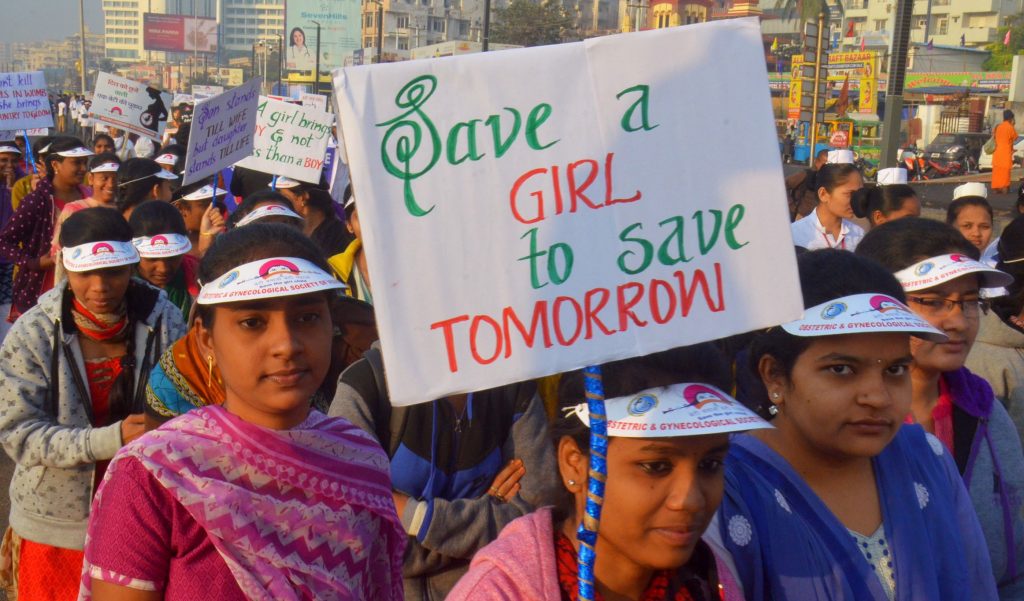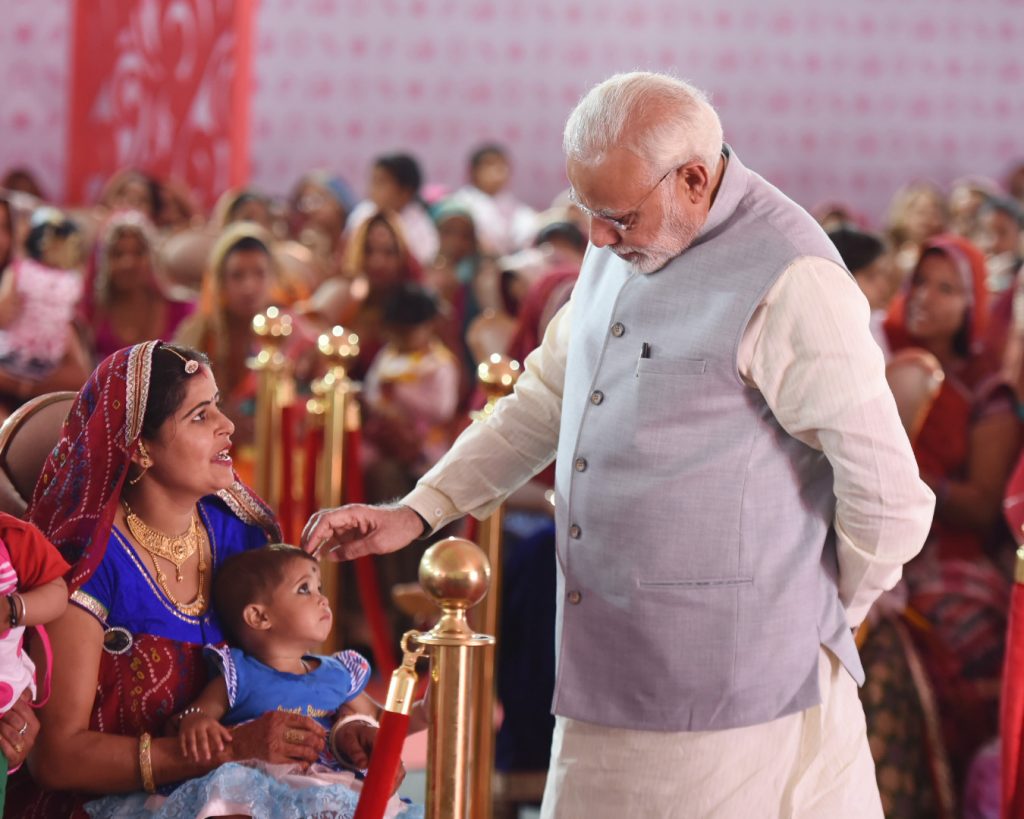
Haryana lagged badly with respect to sex ratio till about a decade ago, but got its act together after PM Modi launched the B3P campaign at Panipat in 2015, and saw a steady increase in sex ratio thereafter. The latest SRB report however has shocked the state, writes Rajesh Moudgil
Haryana got the disappointing news it was afraid of on the sex ratio at birth in the six-monthly 2023 June Civil Registration System (CRS) data report. It reported a drop in sex ratio at birth (SRB) by 11 points. The SRB, which was 917 in 2022 year-end, was reported at 906 by June 2023, causing concerns for the state government and leaving its top functionaries worried.
For, Haryana had hogged the limelight after it launched an aggressive drive against the menace of female foeticide after the Prime Minister Narendra Modi launched the Beti Bachao, Beti Padhao (B3P) campaign from Panipat, on January 22, 2015. And it did improve its sex ratio to 923 female births per 1,000 males by 2019.
The official records say that the state teams since then undertook more than 1,000 decoy operations and nabbed a large number of unscrupulous elements engaged in female feticide and sealed several of their illegal scanning and abortion centres.
These included more than 300 inter-state raids which were conducted in the adjoining states including UP, Punjab, Delhi, Rajasthan, Uttarakhand and Madhya Pradesh wherein accused were arrested under various sections of Pre-Conception and Pre-Natal Diagnostic Techniques (PCPNDT) Act, Medical Termination of Pregnancy (MTP) Act and the Indian Penal Code (IPC). The state agencies also confiscated various gadgets and equipment including the ultrasound machines, the accused used for the crime and cases against them were filed in the court.
However, this drop in the SRB in just six months this year as compared to previous year end, despite the state’s “efforts’’ to check female feticide has left the health authorities disappointed, agree several senior officials.
But, why the drop?
Asked about the reasons behind the drop in the sex ratio now, several officials, who did not want to be named, agreed that the same was primarily because of the official agencies’ delay or failure in timely registration of births in some districts which finally reflect adversely in the overall SRB records.
To the pointed question if the fear of law was waning, they agree partially saying that it was due to the laxity in some state teams which was noticed during the over nine-year old “exercise’’. Besides, lingering court cases and convictions and a spurt in the use of new gadgets by the miscreants have also been among the reasons behind the prevalence of female foeticide.
“There have been mushrooming portable scanners or similar (and smaller) gadgets being used by unscrupulous elements (including quacks who “promise’’ male child) or other professionals indulging in the inhuman act of determining pre-natal sex determination (SD) test. The state agencies have been in the know of these gadgets and that these were some of the major factors behind the dismal gender ratio posing a huge challenge to the authorities.”
Some of the senior officials also admit that mobile-phone-sized “very handy’’ equipment was now being found to be frequently used for conducting the sex determination test and it was a worrisome trend in the recent past. The machine was connected with a probe through a wire and a “picture-like’’ ultrasound started appearing on the screen of the phone-sized gadget when the “probe’’ was rotated over the abdomen of a pregnant woman”, they added.
However, they specified that though the authenticity or precision of the results of such scanning machines was under the cloud, the fact remains that it is successfully being used by the racketeers to attract the aspirants of a male child.
On the other hand, the technology or trick was posing a serious challenge to the health authorities which found it difficult to bust each and every such racket as the sex determination test could, thus, be performed at any place.

Yet, the state teams busted some inter-state rackets and recovered such (cell-phone-sized) gadgets and found that in some cases it was done just to make the patients “feel” that she was being tested. Majority of the times in such cases, the quacks or operators of such equipment declared the unborn child as female, convincing the parents for the abortion!
The miscreants also remain in touch with such hospitals where illegal abortion is performed or supply MTP kits for inducing such illegal abortions, the officials said, and added that frequent availability of these MTP kits also posed serious threat to B3P (Beti Bachao, Beti Padhao) drive, these being convenient to use, cheap and could be used without medical advice.
Such gadgets cost about Rs 2 lakh while the miscreants charge anything up to Rs 40,000 each from their “gullible customers’’ and even operated across the region while having rented accommodations in different cities and having their agents on commission in lieu of sending customers there, say the officials while showing FIRs against such miscreants.
The challenge ahead
The state teams have stepped up their drive and conducted more than 60 raids so far in the year 2023, says Dr G L Singal, B3P campaign convenor, Haryana, and adds that the state government is committed to curb the menace of female foeticide. With the teams also proactively conducting decoy operations with enhanced vigour, he said, the sex ratio is set to improve in the state.
Charkhi Dadri records steepest drop
Meanwhile, according to the CRS half yearly report, while there has been an improvement in eight districts of the state, there has been a sharp drop in the sex ratio in as many as 13 districts. The 22nd district – Sirsa – has shown no change in the SRB, according to the report.
The steepest drop of 65 points was noticed in Charkhi Dadri district, followed by Rohtak which showed a decrease by 60 points, Gurugram, 45 and Kaithal by 32 points.
The Charkhi Dadri recorded 868 ratio till June 30 this year, while it was 933 in December, 2022. The other districts which show decline in the sex ratio included Rohtak with 874, Gurugram 880, Kaithal 889, Karnal 874, Mewat 910, Fatehabad 926, Panchkula 914, Narnaul 888, Bhiwani 897, Sonepat 885, Palwal 909 and Ambala 922.
However, the districts which showed improvement in sex ratio included Rewari with 923 followed by Kurukshetra 928, Jhajjar 919, Jind 961, Faridabad 904, Yamunanagar 933, Panipat 932 and Hisar 908.













